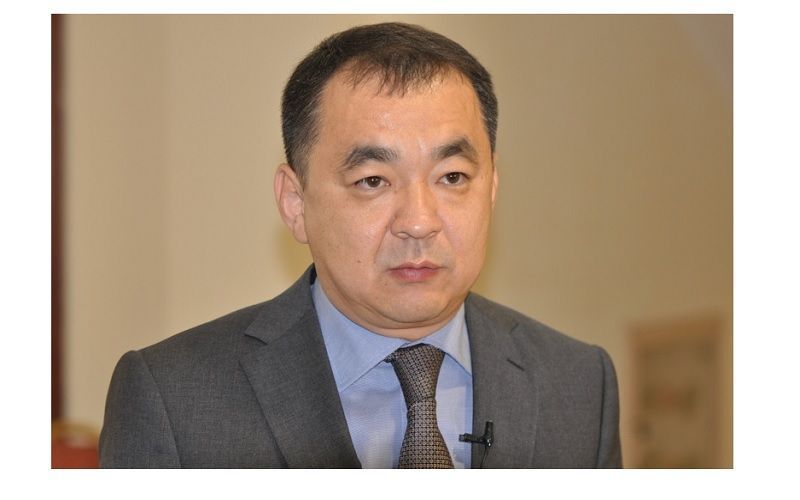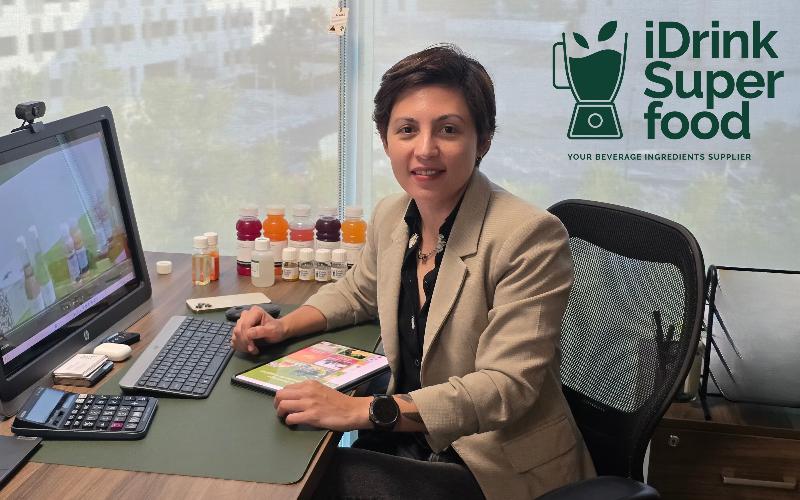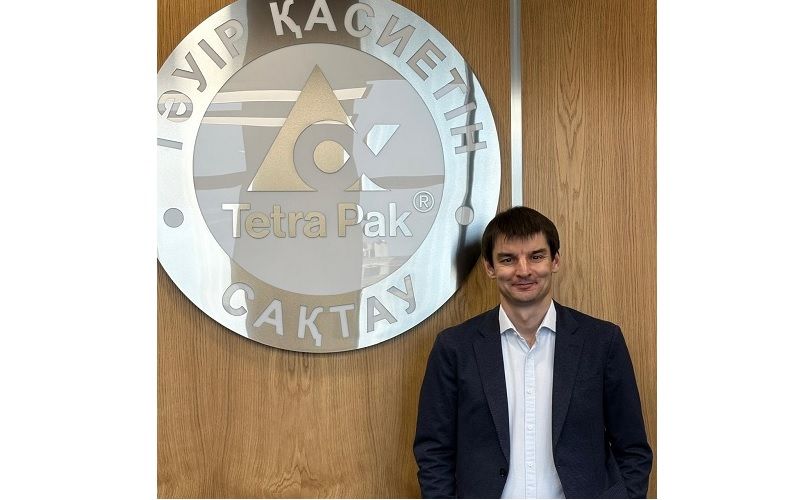The sale of Food Union in Europe to a Chinese investor: details
Source: The DairyNews
On January 10, 2024, news broke about a significant deal in the European market for ice cream and frozen products. PAG Private Equity announced plans to acquire a controlling stake in Food Union Europe, a leading supplier of ice cream and frozen treats in six European countries. Dmitry Dokin, Chairman of the Board of Directors of Shyn-Line Company (Kazakhstan), shared insights with The DairyNews about the deal and its potential consequences.

Dmitry, Are there any details available about the deal, such as the acquired stake, the transaction amount, etc.?
Based on Food Union's release, it seems that in the first quarter, PAG Private Equity will gain full control of the company—meaning the deal is related to a 100% stake and control. The transaction amount is known only to the two parties involved, but it seems there was no direct monetary component; assets in Europe were exchanged for liabilities in China.
Regarding the deal's outcome, did Andrey Beskhmelnytsky completely exit the business?
Yes, as a result of the deal, both Andrey Beskhmelnytsky (the main shareholder of Food Union) and his younger brother Sergey Beskhmelnytsky (the company's manager and affiliated HR director) have completely exited the business. Other specialists and managers with Russian passports successfully passed a Latvian language exam (thanks to their IQ, they were not deported) but are now waiting for the new owner and top management, each with their fate.
What were the reasons behind the sale of Food Union?
The reasons can be categorized into three:
Food Union started acquiring assets in Europe in 2014, including Estonian Premia in 2014 and producers in Romania, Denmark, and Norway in 2015. Over eight years, there was no integration of brands; each European company developed independently. Latvians even adamantly refused to adopt Latvian brands. Only Estonians saw market share growth; others remained around zero. There was no integration or synergy in this union.
In Latvia, where Food Union had a minimum of 55% market share in ice cream, dropping to 45% in 2023, logistics optimization and a reduction in the number of outlets were implemented. The market had outdated freezers with a design from 2012, and packaging remained unchanged for almost 10 years. Despite increasing EBITDA, there was no investment in development, indicating a potential sale.
Market experts since May 2021 noted that such interest could only be in Food Union, signaling an impending sale. In the fall of the same year, it was revealed that Food Union was in talks with one of Russia's confectionery leaders about a sale, but negotiations paused in February 2022.
Perhaps the shareholder and manager's perception of ice cream played a role. They treated it like milk, wondering why so much time and effort were spent on flavor blending, brand visualization, label design, etc. The remaining team's opinion did not change with their departure.
What businesses will the main shareholders of Food Union focus on after the deal?
There are two main shareholders:
Andrey Beskhmelnytsky - an intellectual, athlete, and strategist with unconventional approaches:
He retains an independent fragment of Food Union in Russia and Belarus since February 2022: an ice cream factory in Gomel (Belarus), a dairy plant in Nesvizh (Belarus), and Gatchina (Russia). They successfully develop joint brands with X5 in two categories: ice cream and milk - Sarafanovo (developed by Mildberry for Food Union in 2011) and Verkhovye. The brand of the St. Petersburg HC №1 "Baltiyskoye" is noticeable only in St. Petersburg's Magnit.
In the Chinese project Food Union China (two dairy factories - long storage and fresh) and Food Union Shangmu (Hohhot city) and Food Union AustAsia Dairy (Dongying city), Andrey is the CEO with some options.
Askar Alshinbayev (Meridian Capital) - an intellectual, business warrior, quick thinker, and decision-maker:
He has billion-dollar investments, and this project is not the largest in his portfolio.
In March 2014, in Shanghai's best hotel, Askar noticed me talking to the concierge for quite some time before our meeting. He approached and learned that I was asking for a tie (it was early morning, and the stores were closed, and our team, except me, wore ties for breakfast). He said, "Be free and don't bend to the client" - he took off his tie and threw it over the counter as an example. This was one of the reasons I came to Kazakhstan for the "Shyn-Line" project - and here I met not one but many business warriors!
This provides an overview of the interview and the details surrounding the PAG Private Equity and Food Union deal in the European ice cream and frozen products market.
— Who are PAG Private Equity? Do they have any connection to Beskhmelnytsky's Chinese business?
— They have a significant portfolio in frozen products, snacks, and dairy in various countries (China, Australia, New Zealand, etc.). In the Food Union China company, another Chinese fund is involved.
— With what purpose did PAG Private Equity acquire assets in Europe?
— Chinese companies find it challenging to enter Europe, especially given the Chinese meticulous approach to milk. Therefore, their entry into Europe made sense. However, there was an exchange: Food Union invests in factories in China, and PAG Private Equity invests in Food Union. Everyone agreed to this parity.
— What does this deal mean for Food Union? Should we expect changes in the company's strategy or expansion?
— The main shareholder and manager of the company have changed—two new individuals will come in, and, of course, the development strategy will change. To what extent it will change remains to be seen; soon, everything will become clear.
— What impact can this deal have on the European market for ice cream and frozen products?
— Food Union is undoubtedly a leader in ice cream in Latvia (with a population of only 1.8 million) and Estonia (with a population of only 1.4 million). It is a local Baltic market that does not significantly influence the rest of Europe. Moreover, as we have mentioned, Food Union has inexplicably failed to integrate a common brand within its international group of companies.
In Romania, with a population of 19 million, the Food Union factory is not in the capital but in the Transylvanian mountains—a local production.
Food Union in Denmark (with a population of 5.8 million) is a player after Unilever and Nestle in the provincial town of Kolding.
In Norway (with a population of 5.5 million), the factory is on an island near the city of Bergen—the third player after the two giants Diplon Is (who didn't allow Unilever into the country in 1994) and Henning Olsen. These two are busy fighting each other and not paying attention to the islander.
However, on all three of these national markets, Food Union holds a market share of 6-9%, meaning it has no significant impact on these markets.
All these considerations suggest that what has happened is unlikely to have a substantial impact on the European ice cream market.
Based on Food Union's release, it seems that in the first quarter, PAG Private Equity will gain full control of the company—meaning the deal is related to a 100% stake and control. The transaction amount is known only to the two parties involved, but it seems there was no direct monetary component; assets in Europe were exchanged for liabilities in China.
Regarding the deal's outcome, did Andrey Beskhmelnytsky completely exit the business?
Yes, as a result of the deal, both Andrey Beskhmelnytsky (the main shareholder of Food Union) and his younger brother Sergey Beskhmelnytsky (the company's manager and affiliated HR director) have completely exited the business. Other specialists and managers with Russian passports successfully passed a Latvian language exam (thanks to their IQ, they were not deported) but are now waiting for the new owner and top management, each with their fate.
What were the reasons behind the sale of Food Union?
The reasons can be categorized into three:
- True reasons known only to the two sides of the deal, of which we are not a part.
- Main reasons known to insiders, which are not very positive and inspiring.
- Reasons disclosed to the market:
Food Union started acquiring assets in Europe in 2014, including Estonian Premia in 2014 and producers in Romania, Denmark, and Norway in 2015. Over eight years, there was no integration of brands; each European company developed independently. Latvians even adamantly refused to adopt Latvian brands. Only Estonians saw market share growth; others remained around zero. There was no integration or synergy in this union.
In Latvia, where Food Union had a minimum of 55% market share in ice cream, dropping to 45% in 2023, logistics optimization and a reduction in the number of outlets were implemented. The market had outdated freezers with a design from 2012, and packaging remained unchanged for almost 10 years. Despite increasing EBITDA, there was no investment in development, indicating a potential sale.
Market experts since May 2021 noted that such interest could only be in Food Union, signaling an impending sale. In the fall of the same year, it was revealed that Food Union was in talks with one of Russia's confectionery leaders about a sale, but negotiations paused in February 2022.
Perhaps the shareholder and manager's perception of ice cream played a role. They treated it like milk, wondering why so much time and effort were spent on flavor blending, brand visualization, label design, etc. The remaining team's opinion did not change with their departure.
What businesses will the main shareholders of Food Union focus on after the deal?
There are two main shareholders:
Andrey Beskhmelnytsky - an intellectual, athlete, and strategist with unconventional approaches:
He retains an independent fragment of Food Union in Russia and Belarus since February 2022: an ice cream factory in Gomel (Belarus), a dairy plant in Nesvizh (Belarus), and Gatchina (Russia). They successfully develop joint brands with X5 in two categories: ice cream and milk - Sarafanovo (developed by Mildberry for Food Union in 2011) and Verkhovye. The brand of the St. Petersburg HC №1 "Baltiyskoye" is noticeable only in St. Petersburg's Magnit.
In the Chinese project Food Union China (two dairy factories - long storage and fresh) and Food Union Shangmu (Hohhot city) and Food Union AustAsia Dairy (Dongying city), Andrey is the CEO with some options.
Askar Alshinbayev (Meridian Capital) - an intellectual, business warrior, quick thinker, and decision-maker:
He has billion-dollar investments, and this project is not the largest in his portfolio.
In March 2014, in Shanghai's best hotel, Askar noticed me talking to the concierge for quite some time before our meeting. He approached and learned that I was asking for a tie (it was early morning, and the stores were closed, and our team, except me, wore ties for breakfast). He said, "Be free and don't bend to the client" - he took off his tie and threw it over the counter as an example. This was one of the reasons I came to Kazakhstan for the "Shyn-Line" project - and here I met not one but many business warriors!
This provides an overview of the interview and the details surrounding the PAG Private Equity and Food Union deal in the European ice cream and frozen products market.
— Who are PAG Private Equity? Do they have any connection to Beskhmelnytsky's Chinese business?
— They have a significant portfolio in frozen products, snacks, and dairy in various countries (China, Australia, New Zealand, etc.). In the Food Union China company, another Chinese fund is involved.
— With what purpose did PAG Private Equity acquire assets in Europe?
— Chinese companies find it challenging to enter Europe, especially given the Chinese meticulous approach to milk. Therefore, their entry into Europe made sense. However, there was an exchange: Food Union invests in factories in China, and PAG Private Equity invests in Food Union. Everyone agreed to this parity.
— What does this deal mean for Food Union? Should we expect changes in the company's strategy or expansion?
— The main shareholder and manager of the company have changed—two new individuals will come in, and, of course, the development strategy will change. To what extent it will change remains to be seen; soon, everything will become clear.
— What impact can this deal have on the European market for ice cream and frozen products?
— Food Union is undoubtedly a leader in ice cream in Latvia (with a population of only 1.8 million) and Estonia (with a population of only 1.4 million). It is a local Baltic market that does not significantly influence the rest of Europe. Moreover, as we have mentioned, Food Union has inexplicably failed to integrate a common brand within its international group of companies.
In Romania, with a population of 19 million, the Food Union factory is not in the capital but in the Transylvanian mountains—a local production.
Food Union in Denmark (with a population of 5.8 million) is a player after Unilever and Nestle in the provincial town of Kolding.
In Norway (with a population of 5.5 million), the factory is on an island near the city of Bergen—the third player after the two giants Diplon Is (who didn't allow Unilever into the country in 1994) and Henning Olsen. These two are busy fighting each other and not paying attention to the islander.
However, on all three of these national markets, Food Union holds a market share of 6-9%, meaning it has no significant impact on these markets.
All these considerations suggest that what has happened is unlikely to have a substantial impact on the European ice cream market.
Key News of the Week











